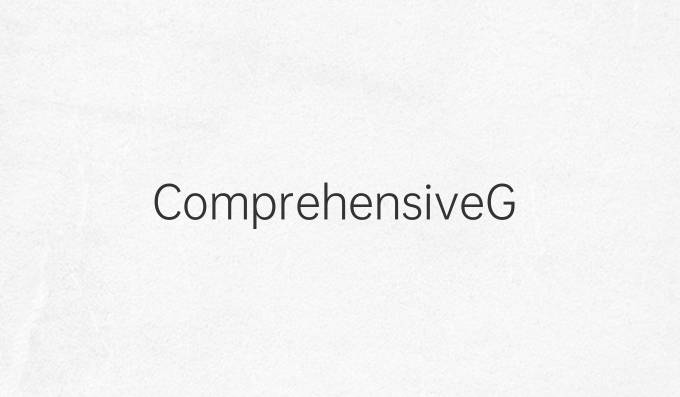
4007-702-802
Follow us on:



本文来源:ManLang 发布时间:2024-07-31 分享:

Abstra: This comprehensive guide to SEO optimization explores key strategies and techniques essential for improving search engine visibility and driving organic traffic to your website. It covers fundamental aspes such as keyword research, onpage optimization, technical SEO, and link building. Each seion provides aionable insights and best praices to help you effeively implement SEO strategies and achieve sustainable results.
Keyword research forms the foundation of any successful SEO strategy. It involves identifying relevant keywords and phrases that your target audience is searching for. Effeive keyword research not only helps in understanding user intent but also enables you to prioritize content creation and optimization efforts.

Start by brainstorming potential keywords related to your business, produs, or services. Use keyword research tools like Google Keyword Planner, SEMrush, or Ahrefs to gather data on search volume, competition level, and related keywords. Aim for a mix of highvolume keywords to attra traffic and longtail keywords for specific targeting.
Once you have a list of keywords, analyze their relevance to your content and business goals. Consider faors such as search intent (informational, navigational, transaional), user demographics, and seasonality. Incorporate primary keywords naturally into your content while avoiding keyword stuffing, which can harm your SEO efforts.
Onpage optimization focuses on optimizing individual web pages to improve their search engine rankings and attra more relevant traffic. It includes optimizing meta tags, headings, images, and content for target keywords and user experience.
Start with optimizing your page titles (title tags) and meta descriptions to include relevant keywords and encourage clicks from search engine results pages (SERPs). Ensure that each page has a clear and descriptive title that accurately refles its content.
Next, optimize your headings (H1, H2, etc.) to struure your content logically and include relevant keywords where appropriate. Use descriptive alt text for images to improve accessibility and provide context to search engines. Additionally, optimize your page content by incorporating keywords naturally and organizing it into wellstruured paragraphs and bullet points.
Technical SEO refers to optimizing the technical aspes of your website to improve its crawling, indexing, and overall visibility in search engines. It involves optimizing site speed, mobile responsiveness, URL struure, and internal linking.
Begin by ensuring that your website loads quickly on both desktop and mobile devices. Use tools like Google PageSpeed Insights to identify and fix issues affeing your site's speed, such as large image files or unnecessary scripts.
Next, optimize your website's URL struure to be concise, descriptive, and userfriendly. Avoid using complex or ambiguous URLs that can confuse both users and search engines. Implement canonical tags to prevent duplicate content issues and consolidate link equity.
Finally, optimize internal linking to improve navigation and distribute link equity throughout your website. Create a logical hierarchy of internal links using descriptive anchor text that includes relevant keywords. This helps search engines understand the relationships between different pages and improves the overall crawlability of your site.
Link building is the process of acquiring hyperlinks from other websites to your own with the goal of improving search engine rankings and driving referral traffic. Quality backlinks from authoritative and relevant websites signal to search engines that your site is trustworthy and deserves to rank higher.
Start by identifying opportunities for natural link building, such as guest blogging, partnerships, and content collaborations with industry influencers. Create highquality content that provides value to your target audience and encourages other websites to link back to your pages.
Focus on acquiring backlinks from websites with high domain authority and relevance to your industry or niche. Avoid spammy linkbuilding praices, such as buying links or participating in link schemes, as they can result in penalties from search engines.
Monitor your backlink profile regularly using tools like Moz Link Explorer or Ahrefs to identify new link opportunities and disavow toxic links that may harm your SEO efforts. Continuously seek to build relationships with other webmasters and influencers in your industry to enhance your linkbuilding strategy.
Summary: In conclusion, mastering the key strategies and techniques outlined in this comprehensive guide to SEO optimization is crucial for improving your website's search engine visibility and driving organic traffic. By focusing on keyword research, onpage optimization, technical SEO, and strategic link building, you can create a solid foundation for longterm SEO success. Implement these best praices consistently, monitor your performance metrics, and adapt your strategy as needed to achieve sustainable growth in organic search traffic.
猜您感兴趣的内容
Unlock Your Business Potential with Expert SEO Services: Drive Traffic, Boost Rankings, and Enhance
2025-02-22Strategic Brand Development: Elevating Your Enterprise Identity for Market Leadership
2025-02-22Transforming Financial Content Marketing: Strategies for Engaging Audiences and Driving Growth in th
2025-02-22Maximizing Global Reach: Innovative Strategies for Effeive Foreign Trade Online Marketing
2025-02-22Mastering Content Marketing Strategy: Innovative Approaches to Engage Your Audience and Drive Result
2025-02-22Maximizing Online Visibility: Innovative Strategies for Effeive Search Engine Marketing in a Competi
2025-02-22您也许还感兴趣的内容
Centered Around SEO & SEM: Strategies for Optimizing Online Presence and Driving Traffic
2025-01-05Elevate Your Global Business: Expert 外贸网站设计 for Effeive International Trade Engagement
2024-09-06Accelerate Your Online Success with Expert SEO Fast Ranking Services for Unmatched Visibility and Gr
2024-10-29Unlocking Success: A Dive Into Ecommerce Content Marketing Case Studies
2024-05-24Strategies for Effeive SEO and SEM: A Comprehensive Guide to Boosting Online Visibility and Traffic
2024-12-28What Is Brand Marketing: Unveiling the Power of Strategic Branding?
2024-01-26Boost Your International Trade Success: Innovative Strategies for Promoting Your Foreign Trade Websi
2024-12-07